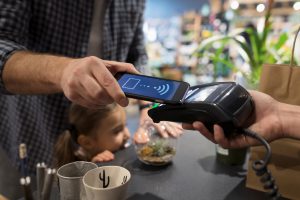We are witnessing a significant and inevitable shift in digital payments to mobile commerce. Consumers are now spending more time and money on their mobile devices than on their desktops and in stores, says Andy McDonald, vice president, merchant retail EMEA at ACI Worldwide.
Technological innovation is increasing demand for mobile payments, with all POS terminals expected to facilitate mobile payments by 2020 and users predicted to own 9 connected devices on average by 2021.
However, currently only 3% of all mobile payments spend is actually billed by telcos. For telcos to gain a share of the mobile payments pie and avoid being disintermediated, they must proactively add value to the payment process. According to a recent analysis carried out by telco experts at ACI Worldwide and Red Dawn Consulting, we believe that telcos have an opportunity to increase their mobile payments revenue at least fourfold by 2022.
Add to this the increasing number of new market entrants, in particular OTT (“over the top”) players, which are threatening the traditional bread and butter revenue streams of telco companies, and it is clear that MNOs and MVNOs need to consider how to carve out a profitable, sustainable path in a digitally-connected future.
The Internet of Things as key driver for change
In the next 10 years, we will witness an exponential expansion in the number of devices and applications we will use to make mobile payments. You could pay for your groceries on your mobile, for delivery at home, then two days later receive a message from your fridge alerting you that the milk is running low. By the time you get back home, a new bottle of milk could be waiting for you, thanks to real-time delivery, even by a drone.

For this cross-functional environment to work, we believe the market must move from fragmented to integrated. We see telcos as a hub for the digital marketplace: as an integrator for devices, applications, methods of mobile payment and customer identity management.
Greater innovation requires greater responsibility: if device manufacturers, software developers, merchants and payment enablers do not integrate their products and services, consumers may have more choice, but a poorer experience. Customers’ convenience and trust are key for merchants to grow their mobile payments in the long term. Forming partnerships with merchants, manufacturers and payment enablers as well as focusing on convenience and trust to improve the customer experience will be key.
We believe that the mobile, which is kept on standby 96% of the day, can play a central role in consumer payments, both online and in-store. To resolve the complexity of mobile payment options, the market needs an aggregator.
We believe telcos have the technology know-how, as well as the subscriber base advantage to be that aggregator, and also help with identity management. To become that aggregator, telcos need a robust payments solution, one that can handle more transactions, increased fraud risk and be able to create a seamless customer experience.
Technology solutions that enable those ideas
From the arrival of Paypal in checkout pages to the incorporation of NFC technology in smartphones, the mobile payments market is moving toward improving customer convenience.
The most innovative convenience-enhancing solutions are the ones that connect the dots the quickest, particularly between customer and payment: think peer-to-peer transfers via Facebook chat for Transferwise account holders, the Telstra One Number, which uses e-SIM technology to allow voice and data sharing across devices, under one phone number. Or the millions of Chinese WeChat and Alipay users who pay for products by scanning QR codes from newspapers, online adverts or smart TVs.

What can telcos take away from these examples? Firstly, the e-SIM makes it easier to use the consumer’s telephone number as a quick authentication method across devices. The data gathered from device-specific payments and traffic can be analysed to understand and monetise consumer interests. Telcos could also play a role in the increasing move to peer to peer payments.
By building strategic relationships with merchants, consumers and technology platforms, major disruptive players (such as Uber, Apple and Paypal) deliver frictionless, real-time payments to consumers. We believe that telcos have a unique opportunity to drive mobile payments – by building on direct carrier billing through multiple payment options, data management and seamless fulfilment – to the next level.
The author of this blog is Andy McDonald, vice president, merchant retail EMEA at ACI Worldwide
Comment on this article below or via Twitter: @ VanillaPlus OR @jcvplus






